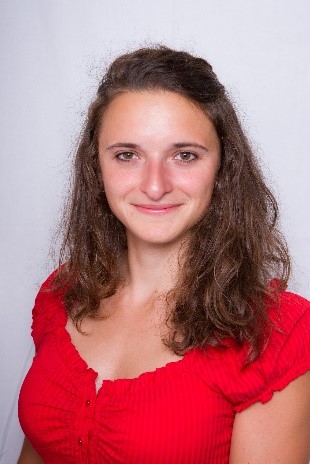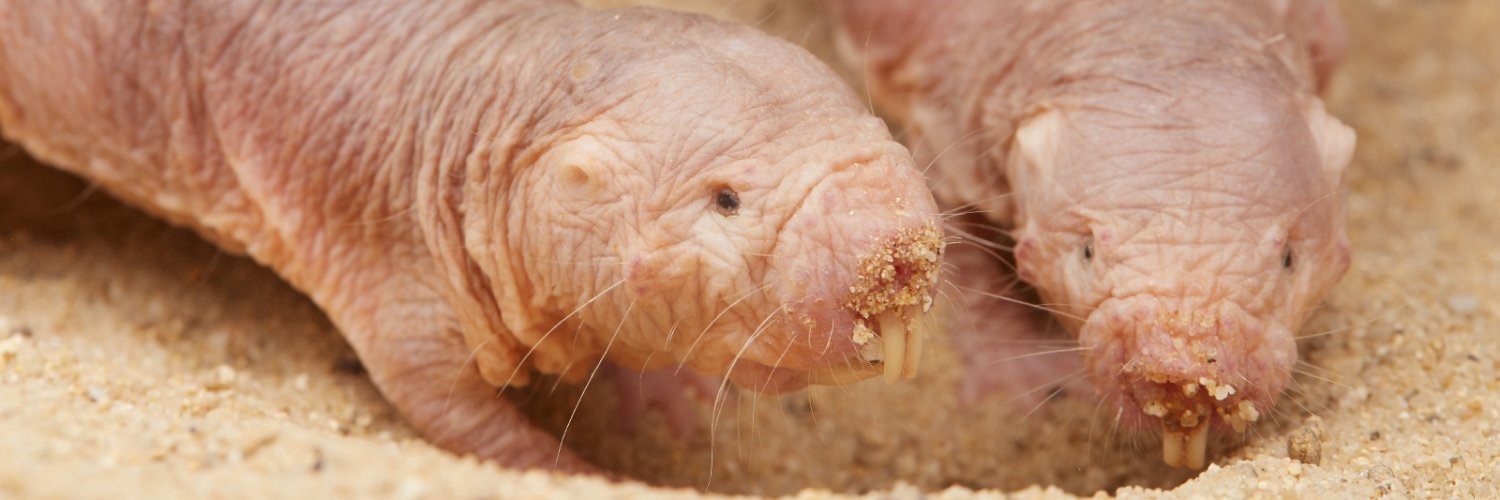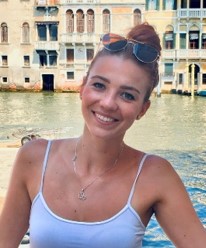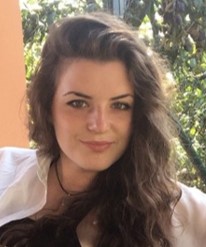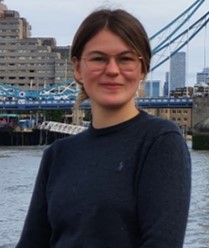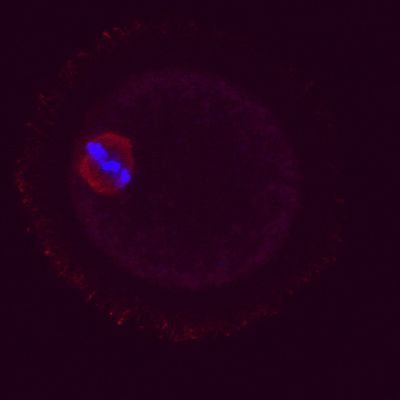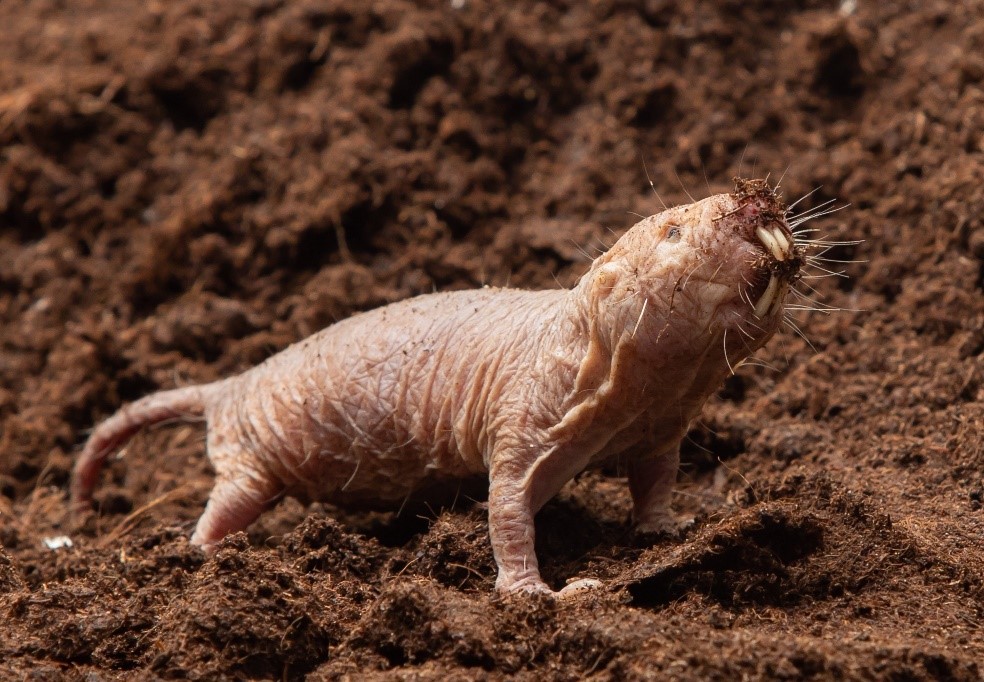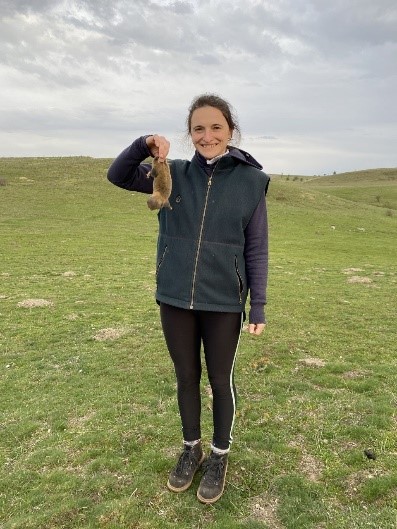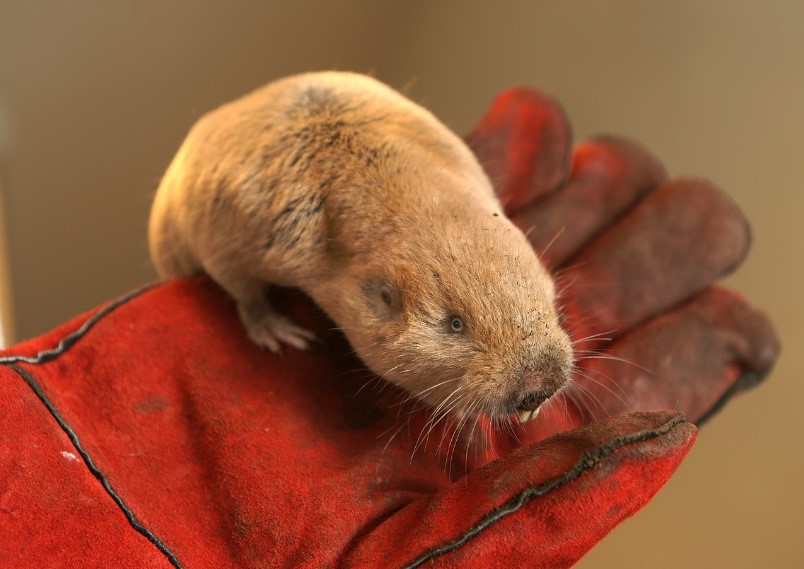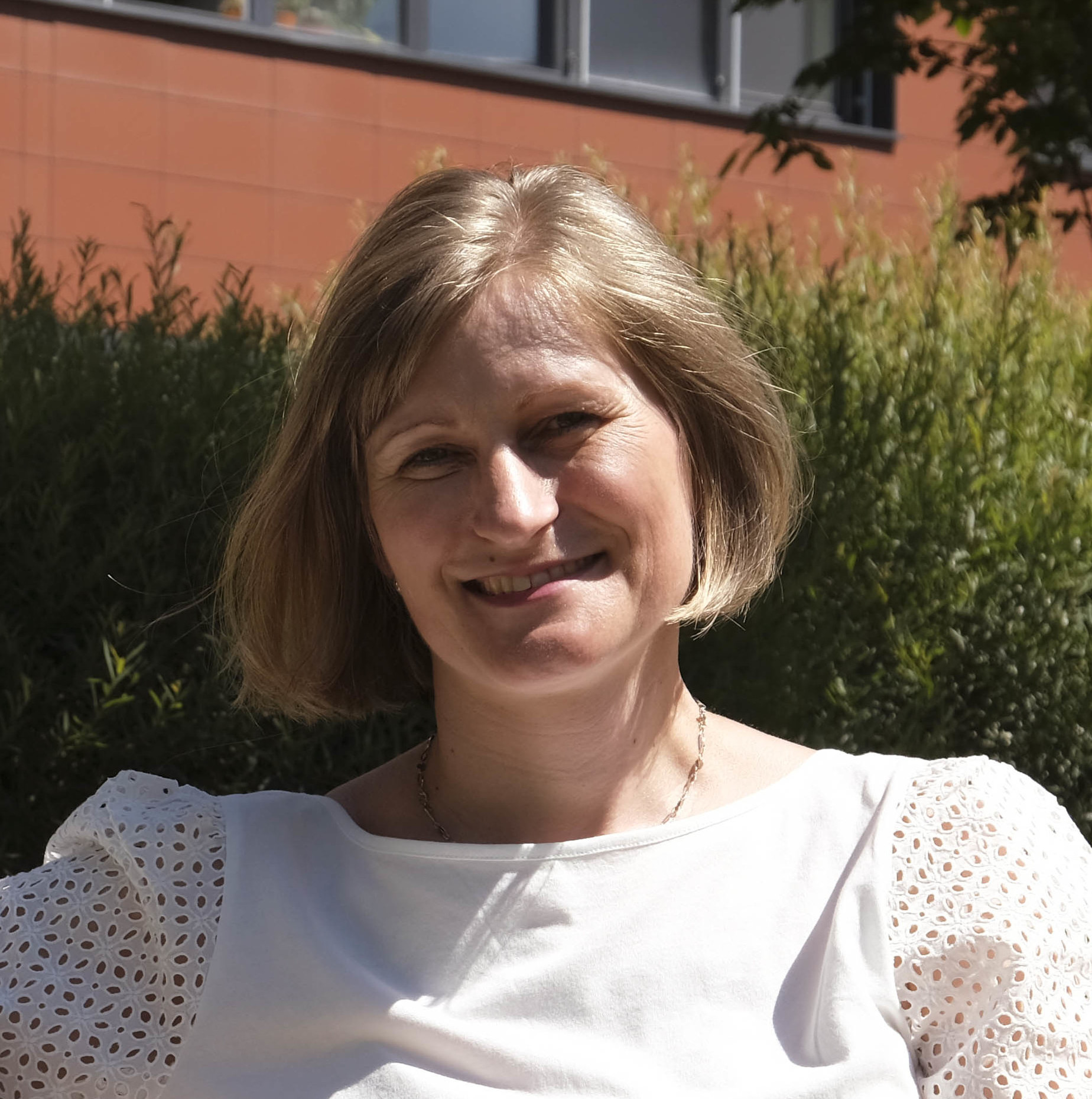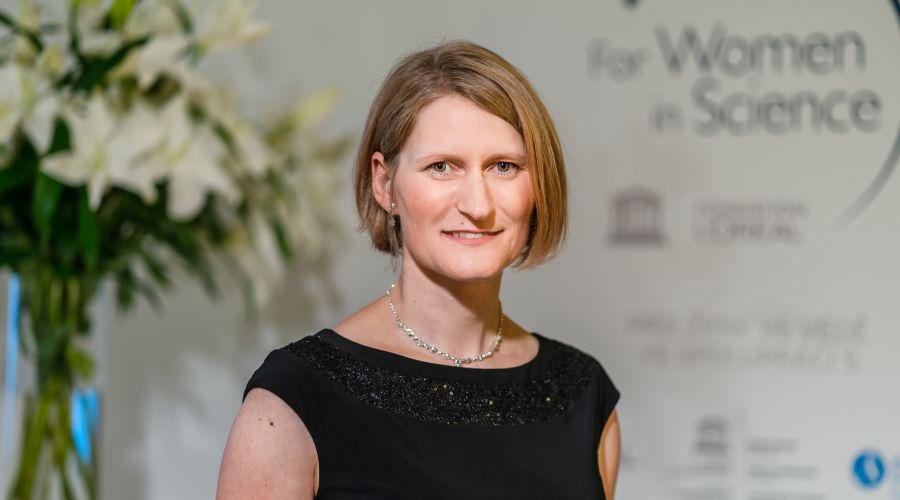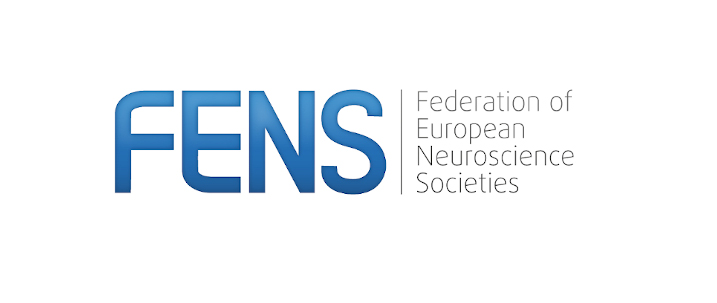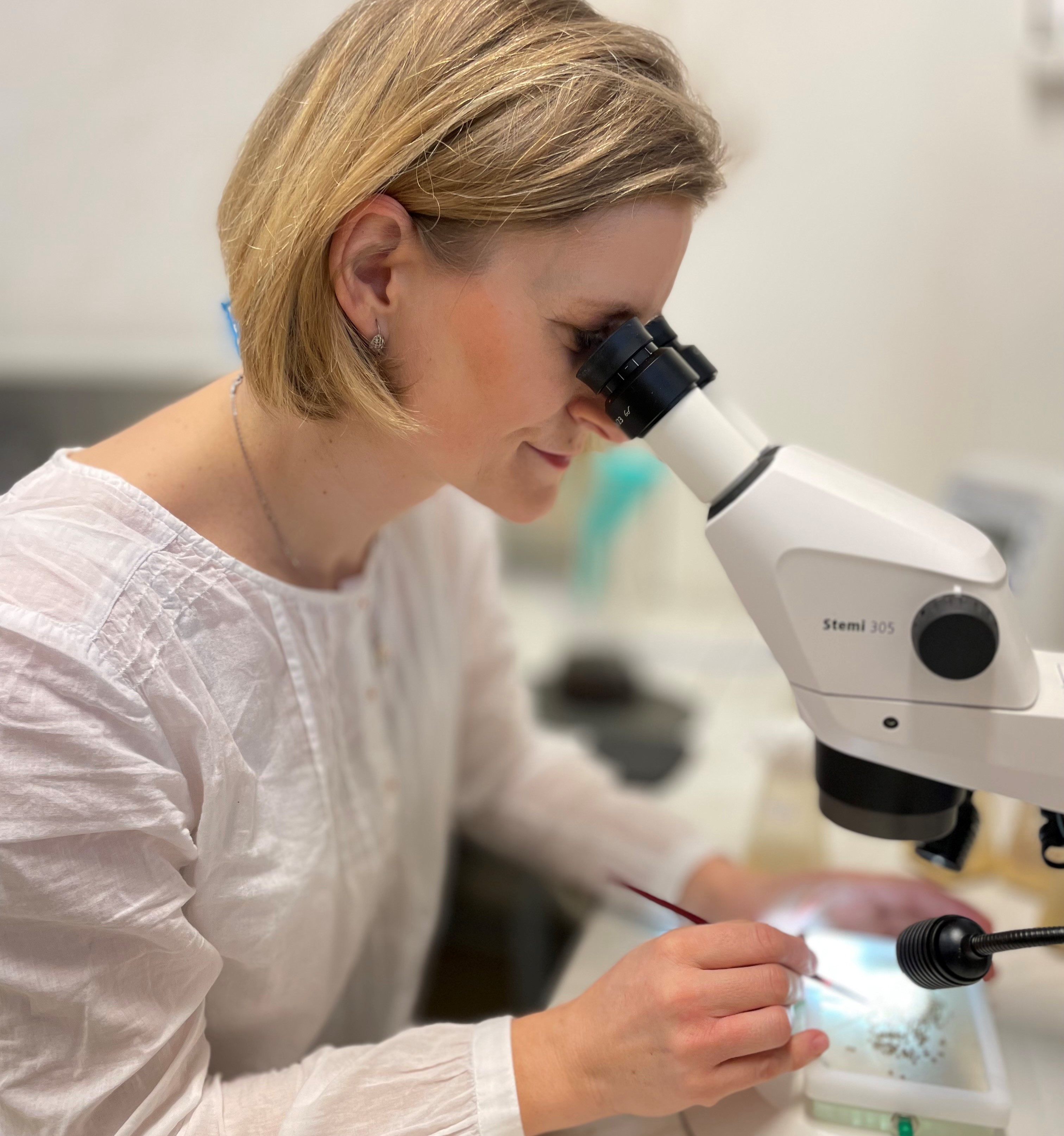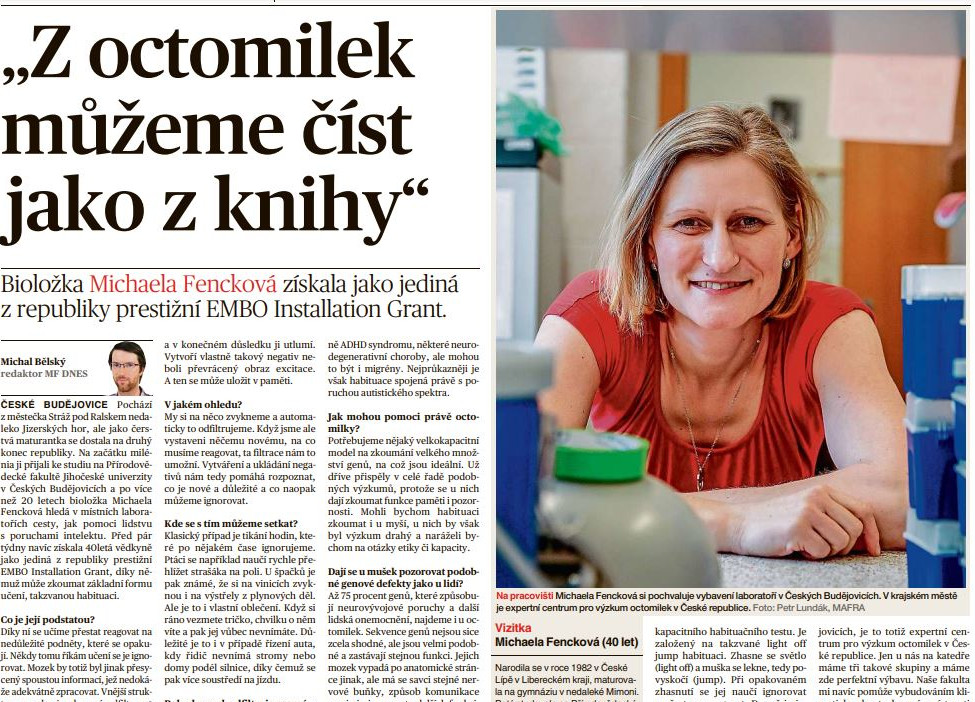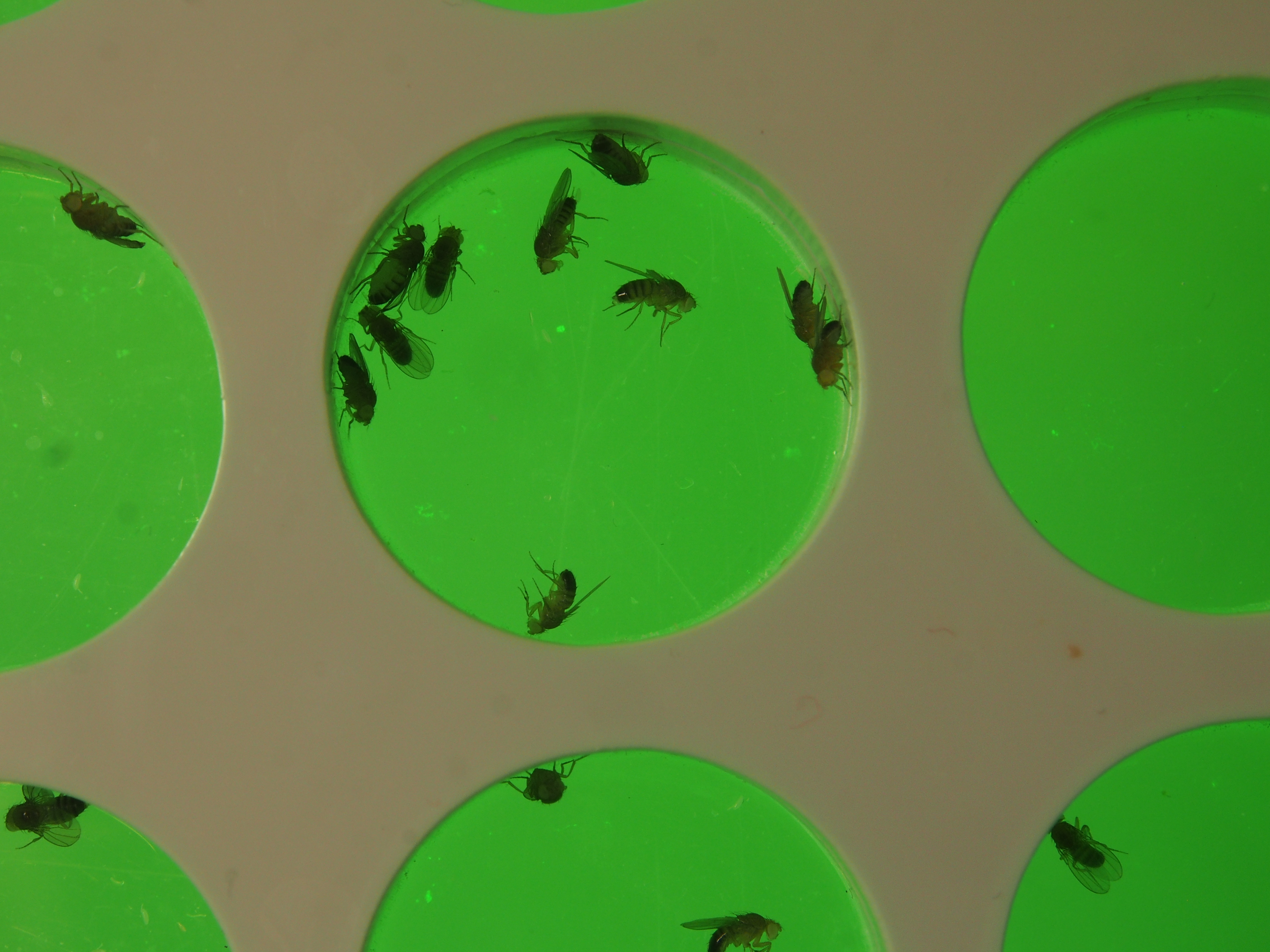Research
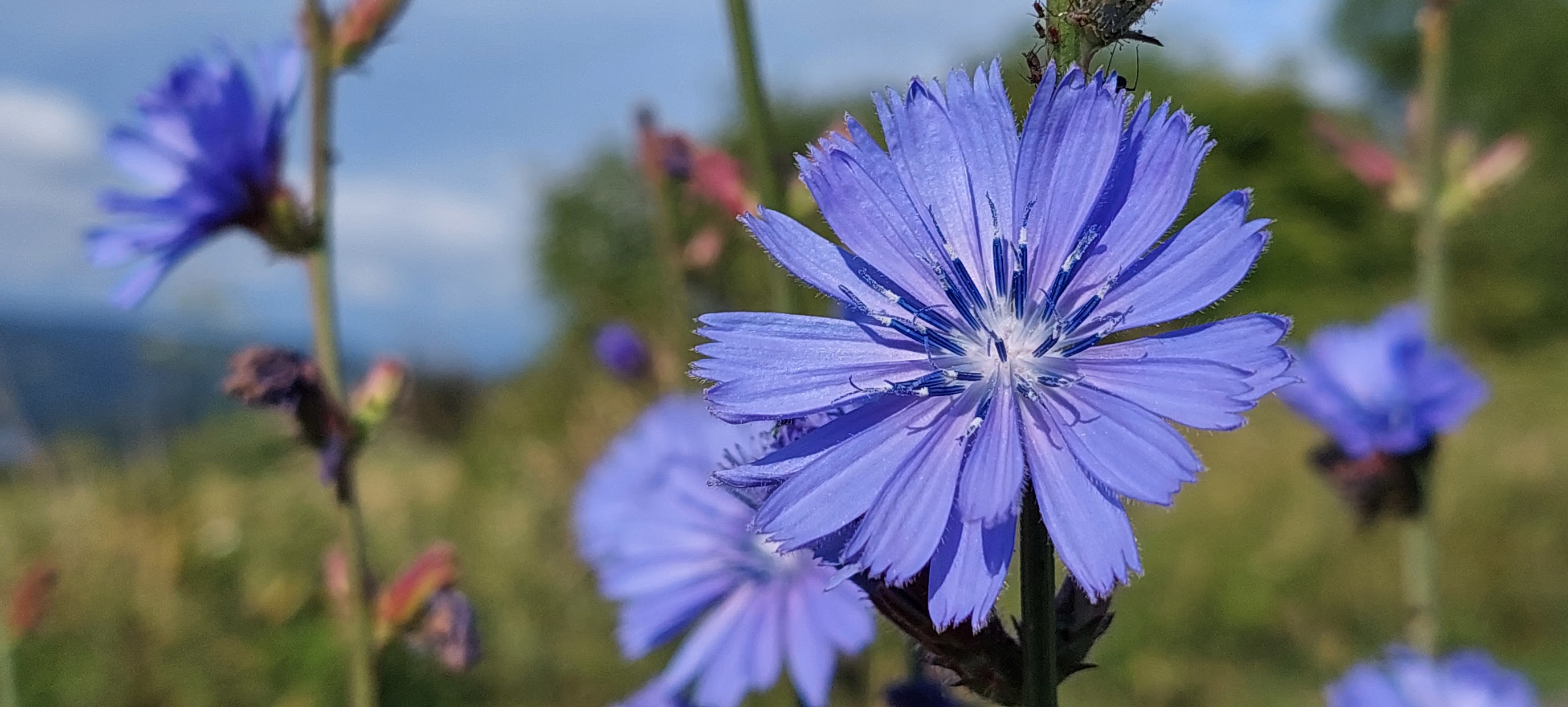
Department of Experimental Plant Biology
-
Workgroups
-
Projects
-
Publications
2024
Hájek, T., & Urbanová, Z. (2024). Enzyme adaptation in Sphagnum peatlands questions the significance of dissolved organic matter in enzyme inhibition. Science of The Total Environment, 911, 168685. https://doi.org/10.1016/j.scitotenv.2023.168685
Svobodová, K., Krištůfek, V., Kubásek, J., & Bruce Krejčí, A. (2024). Alcohol extract of the gypsy mushroom (Cortinarius caperatus) inhibits the development of Deformed wing virus infection in western honey bee (Apis mellifera). Journal of Insect Physiology, 152, 104583. https://doi.org/10.1016/J.JINSPHYS.2023.104583
Weides, S. E., Hájek, T., Liancourt, P., Herberich, M. M., Kramp, R. E., Tomiolo, S., Pacheco‐Riaño, L. C., Tielbörger, K., & Májeková, M. (2024). Belowground niche partitioning is maintained under extreme drought. Ecology, 105(1), e4198. https://doi.org/10.1002/ecy.4198
2023
Kubásek, J., Kalistová, T., Janová, J., Askanbayeva, B., Bednář, J., & Šantrůček, J. (2023). 13 CO2 labelling as a tool for elucidating the mechanism of cuticle development: a case of Clusia rosea. The New Phytologist, 238(1), 202–215. https://doi.org/10.1111/nph.18716
Kalistová, T., & Janda, M. (2023). Could a cuticle be an active component of plant immunity? Biologia plantarum, 67, 322-333. https://doi.org/10.32615/bp.2023.037
Janda, M., Rybak, K., Krassini, L., Meng, C., Feitosa-Junior, O., Stigliano, E., Szulc, B., Sklenar, J., Menke, F. L. H., Malone, J. G., Brachmann, A., Klingl, A., Ludwig, C., & Robatzek, S. (2023). Biophysical and proteomic analyses of Pseudomonas syringae pv. tomato DC3000 extracellular vesicles suggest adaptive functions during plant infection. mBio, 14(4), e0358922. https://doi.org/10.1128/mbio.03589-22
Awasthi, P., Mishra, A. K., Kocábek, T., Nath, V. S., Mishra, S., Hazzouri, K. M., Sudalaimuthuasari, N., Stajner, N., Jakše, J., Krofta, K., Hájek, T., & Amiri, K. M. A. (2023). CRISPR/Cas9-mediated mutagenesis of the mediator complex subunits MED5a and MED5b genes impaired secondary metabolite accumulation in hop (Humulus lupulus). Plant Physiology and Biochemistry, 201, 107851. https://doi.org/10.1016/j.plaphy.2023.107851
Visez, N., Hamzé, M., Vandenbossche, K., Occelli, F., de Nadaï, P., Tobon, Y., Hájek, T., & Choël, M. (2023). Uptake of ozone by allergenic pollen grains. Environmental Pollution, 331, 121793. https://doi.org/10.1016/j.envpol.2023.121793
Krejčová, G., Morgantini, C., Zemanová, H., Lauschke, V. M., Kovářová, J., Kubásek, J., Nedbalová, P., Kamps-Hughes, N., Moos, M., Aouadi, M., Doležal, T., & Bajgar, A. (2023). Macrophage-derived insulin antagonist ImpL2 induces lipoprotein mobilization upon bacterial infection. The EMBO Journal, e114086. https://doi.org/10.15252/EMBJ.2023114086
Vondrák, J., Svoboda, S., Zíbarová, L., Štenclová, L., Mareš, J., Pouska, V., Košnar, J., & Kubásek, J. (2023). Alcobiosis, an algal-fungal association on the threshold of lichenisation. Scientific Reports 2023 13:1, 13(1), 1–13. https://doi.org/10.1038/s41598-023-29384-4
2022
Kubásek, J., Hájek, T., Duckett, J., Pressel, S., & Šantrůček, J. (2022). Moss stomata do not respond to light and CO2 concentration but facilitate carbon uptake by sporophytes: A gas exchange, stomatal aperture and 13C labelling study. New Phytologist, 230, 1815-1828. https://doi.org/10.1111/nph.17208
Šantrůček, J. (2022). The why and how of sunken stomata: does the behaviour of encrypted stomata and the leaf cuticle matter? Annals of Botany, 130, 285-300. https://doi.org/10.1093/aob/mcac055
Janda, M., & Robatzek, S. (2022). Extracellular vesicles from phytobacteria: Properties, functions and uses. Biotechnology advances, 58, 107934. https://doi.org/10.1016/j.biotechadv.2022.107934
Barrio, I. C., Ehrich, D., Soininen, E. M., Ravolainen, V. T., Bueno, C. G., Gilg, O., Koltz, A. M., Speed, J. D. M., Hik, D. S., Mörsdorf, M., Alatalo, J. M., Angerbjörn, A., Bêty, J., Bollache, L., Boulanger-Lapointe, N., Brown, G. S., Eischeid, I., Giroux, M. A., Hájek, T., et al. (2022). Developing common protocols to measure tundra herbivory across spatial scales. Arctic Science, 8(3), 638-679. https://doi.org/10.1139/as-2020-0020
Kosová, V., Hájek, T., Hadincová, V., & Münzbergová, Z. (2022). The importance of ecophysiological traits in response of Festuca rubra to changing climate. Physiologia Plantarum, 174(1), e13608. https://doi.org/10.1111/ppl.13608
Kubásek, J., Svobodová, K., Půta, F., & Krejčí, A. B. (2022). Honeybees control the gas permeability of brood and honey cappings. iScience, 25(11), 105445. https://doi.org/10.1016/J.ISCI.2022.105445
2021
Kubásek, J., Hájek, T., Duckett, J., Pressel, S., & Šantrůček, J. (2021). Moss stomata do not respond to light and CO2 concentration but facilitate carbon uptake by sporophytes: a gas exchange, stomatal aperture and 13C labelling study. New Phytologist, 230(5), 1815-1828. https://doi.org/10.1111/nph.17208
Lubbe, F. C., Bitomský, M., Hájek, T., de Bello, F., Doležal, J., Jandová, V., Janeček, Š., Bartušková, A., Lanta, V., & Klimešová, J. (2021). A tale of two grasslands: how belowground storage organs coordinate their traits with water-use traits. Plant and Soil, 465(1-2), 533-548. https://doi.org/10.1007/s11104-021-05031-7
Jílková, V., Devetter, M., Bryndová, M., Hájek, T., Kotas, P., Luláková, P., Meador, T., Navrátilová, D., Saccone, P., & Macek, P. (2021). Carbon Sequestration Related to Soil Physical and Chemical Properties in the High Arctic. Global Biogeochemical Cycles, 35(9), e2020GB006877. https://doi.org/10.1029/2020GB006877
Martínková, J., Hájek, T., Adamec, L., & Klimešová, J. (2021). Growth, root respiration and photosynthesis of a root-sprouting short-lived herb after severe biomass removal. Flora, 284, 151915. https://doi.org/10.1016/j.flora.2021.151915
Urbanová, Z., & Hájek, T. (2021). Revisiting the concept of ‘enzymic latch’ on carbon in peatlands. Science of The Total Environment, 779, 146384. https://doi.org/10.1016/j.scitotenv.2021.146384
Angst, G., Pokorný, J., Mueller, C. W., Prater, I., Preusser, S., Kandeler, E., Meador, T., Straková, P., Hájek, T., van Buiten, G., & Angst, Š. (2021). Soil texture affects the coupling of litter decomposition and soil organic matter formation. Soil Biology and Biochemistry, 159, 108302. https://doi.org/10.1016/j.soilbio.2021.108302
Májeková, M., Hájek, T., Albert, Á. J., de Bello, F., Doležal, J., Götzenberger, L., Janeček, Š., Lepš, J., Liancourt, P., & Mudrák, O. (2021). Weak coordination between leaf drought tolerance and proxy traits in herbaceous plants. Functional Ecology, 35(6), 1299-1311. https://doi.org/10.1111/1365-2435.13792
Vráblová, M., Marková, D., Vrábl, D., Koutník, I., Sokolová, B., & Hronková, M. (2021). Surface plasmon resonance: An innovative method for studying water permeability of plant cuticles. Plant Science, 310. https://doi.org/10.1016/j.plantsci.2021.110978
Voon, C. P., Law, Y.-S., Guan, X., Lim, S.-L., Xu, Z., Chu, W.-T., Zhang, R., Sun, F., Labs, M., Leister, D., Pribil, M., Hronková, M., Kubásek, J., Cui, Y., Jiang, L., Tsuyama, M., Gardeström, P., Tikkanen, M., & Lim, B. L. (2021). Modulating the activities of chloroplasts and mitochondria promotes adenosine triphosphate production and plant growth. Quantitative Plant Biology, 2. https://doi.org/10.1017/qpb.2021.7
2020
Hájek, T. (2020). Interlinking moss functional traits. A commentary on: ‘Mechanisms behind species-specific water economy responses to water level drawdown in peat mosses’. Annals of Botany, 126(2), iv-v. https://doi.org/10.1093/aob/mcaa108
Vicherová, E., Glinwood, R., Hájek, T., Šmilauer, P., & Ninkovic, V. (2020). Bryophytes can recognize their neighbours through volatile organic compounds. Scientific Reports, 10(1), 7405. https://doi.org/10.1038/s41598-020-64108-y
Tveit, A. T., Kiss, A., Winkel, M., Horn, F., Hájek, T., Svenning, M. M., Wagner, D., & Liebner, S. (2020). Environmental patterns of brown moss- and Sphagnum-associated microbial communities. Scientific Reports, 10(1), 22412. https://doi.org/10.1038/s41598-020-79773-2
Liancourt, P., Song, X., Macek, M., Santrucek, J., & Dolezal, J. (2020). Plant's-eye view of temperature governs elevational distributions. Global Change Biology, 26, 4094-4103. https://doi.org/10.1111/gcb.15129
Canarini, A., Wanek, W., Watzka, M., Sandén, T., Spiegel, H., Šantrůček, J., & Schnecker, J. (2020). Quantifying microbial growth and carbon use efficiency in dry soil environments via 18O water vapor equilibration. Global Change Biology, 26, 5333-5341. https://doi.org/10.1111/gcb.15168
Hůnová, I., Hanusková, D., Jandová, K., Tesař, M., Květoň, J., Kukla, J. (2020). Estimates of the contribution of fog water to wet atmospheric deposition in Czech mountain forests based on its stable hydrogen and oxygen isotope composition: Preliminary results. European journal of environmental sciences, 10(2,) 89-97. https://doi.org/10.14712/23361964.2020.10
Šolcová, A., Jamrichová, E., Horsák, M., Pařil, P., Petr, L., Heiri, O., Květoň, J., Křížek, M., Hartvich, F., Hájek, M., Hájková, P. (2020). Abrupt vegetation and environmental change since the MIS 2: A unique paleorecord from Slovakia (Central Europe). Quaternary Science Reviews, 230, 106170. https://doi.org/10.1016/j.quascirev.2020.106170
Vráblová, M., Hronková, M., Vrábl, D., Kubásek, J., & Šantrůček, J. (2018). Light intensity-regulated stomatal development in three generations of Lepidium sativum. Environmental and Experimental Botany, 156. https://doi.org/10.1016/j.envexpbot.2018.09.012
Vráblová, M., Vrábl, D., Sokolová, B., Marková, D., & Hronková, M. (2020). A modified method for enzymatic isolation of and subsequent wax extraction from Arabidopsis thaliana leaf cuticle. Plant Methods, 16(1). https://doi.org/10.1186/s13007-020-00673-7
2019
Šantrůček, J., Schreiber, L., Macková, J., Vráblová, M., Květoň, J., Macek, P., & Neuwirthová, J. (2019). Partitioning of mesophyll conductance for CO2 into intercellular and cellular components using carbon isotope composition of cuticles from opposite leaf sides. Photosynthesis Research, 141, 33-51. https://doi.org/10.1007/s11120-019-00628-7
Májeková, M., Martínková, J., Hájek, T., & Niu, S. (2019). Grassland plants show no relationship between leaf drought tolerance and soil moisture affinity, but rapidly adjust to changes in soil moisture. Functional Ecology, 33(5), 774-785. https://doi.org/10.1111/1365-2435.13312
Vondrak, J., Urbanavichus, G., Palice, Z., Malicek, J., Urbanavichene, I., Kubásek, J., & Ellis, C. (2019). The epiphytic lichen biota of Caucasian virgin forests: a comparator for European conservation. Biodiversity and Conservation, 28(12), 3257–3276. https://doi.org/10.1007/s10531-019-01818-4
Vondrak, J., Frolov, I., Davydov, E. A., Yakovchenko, L., Malicek, J., Svoboda, S., & Kubásek, J. (2019). The lichen family Teloschistaceae in the Altai-Sayan region (Central Asia). Phytotaxa, 396(1), 1-+. https://doi.org/10.11646/phytotaxa.396.1.1
2018
Plavcová, L., Hronková, M., Šimková, M., Květoň, J., Vráblová, M., Kubásek, J., & Šantrůček, J. (2018) Seasonal variation of d18O and d2H in leaf water of Fagus sylvatica L. and related water compartments. Journal of Plant Physiology, 227, 56-65. https://doi.org/10.1016/j.jplph 2018.03.009
Vráblová, M., Hronková, M., Vrábl, D., Kubásek, J., & Šantrůček, J. (2018). Light intensity-regulated stomatal development in three generations of Lepidium sativum. Environmental and Experimental Botany, 156: 316-324, 2018. https://doi.org/10.1016/j.envexpbot.2018.09.012
Světlíková, P., Hájek, T., & Těšitel, J. (2018). Water-stress physiology of Rhinanthus alectorolophus, a root-hemiparasitic plant. PLOS ONE, 13(8), e0200927. https://doi.org/10.1371/journal.pone.0200927
Světlíková, P., Hájek, T., & Těšitel, J. (2018). A hemiparasite in the forest understorey: photosynthetic performance and carbon balance of Melampyrum pratense. Plant Biology, 20(1), 50-58. https://doi.org/10.1111/plb.12638
Bengtsson, F., Rydin, H., & Hájek, T. (2018). Biochemical determinants of litter quality in 15 species of Sphagnum. Plant and Soil, 425(1-2), 161-176. https://doi.org/10.1007/s11104-018-3579-8
Bjorkman, A. D., Myers‐Smith, I. H., Elmendorf, S. C., Normand, S., Thomas, H. J. D., …Hájek, T. et al. (2018). Tundra Trait Team: A database of plant traits spanning the tundra biome. Global Ecology and Biogeography, 27(12), 1402-1411. https://doi.org/10.1111/geb.12821
Juřicková, L., Pokorný, P., Hošek, J., Horáčková, J., Květoň, J., Zahajská, P., Jansová, A., Ložek, V. (2018). Early postglacial recolonisation, refugial dynamics and the origin of a major biodiversity hotspot. A case study from the Mala Fatra mountains, Western Carpathians, Slovakia. Holocene, 28(4), 583-594. https://doi.org/10.1177/0959683617735592
2017
Stolárik, T., Hedtke, B., Šantrůček, J., Ilík, P., Grimm, B., & Pavlovič, A. (2017). Transcriptional and post-transcriptional control of chlorophyll biosynthesis by dark-operative protochlorophyllide oxidoreductase in Norway spruce. Photosynthesis Research, 132, 165-179. https://doi.org/10.1007/s11120-017-0354-2
Vráblová, M., Vrábl, D., Hronková, M., Kubásek, J., & Šantrůček, J. (2017). Stomatal function, density and pattern, and CO2 assimilation in Arabidopsis thaliana tmm1 and sdd1-1 mutants. Plant Biology, 19, 689-701. https://doi.org/10.1111/plb.12577
Korrensalo, A., Alekseychik, P., Hájek, T., Rinne, J., Vesala, T., Mehtätalo, L., Mammarella, I., & Tuittila, E. -S. (2017). Species-specific temporal variation in photosynthesis as a moderator of peatland carbon sequestration. Biogeosciences, 14(2), 257-269. https://doi.org/10.5194/bg-14-257-2017
Vicherová, E., Hájek, M., Šmilauer, P., & Hájek, T. (2017). Sphagnum establishment in alkaline fens: Importance of weather and water chemistry. Science of The Total Environment, 580, 1429-1438. https://doi.org/10.1016/j.scitotenv.2016.12.109
2016
Šantrůčková, H., Kubešová, J., Šantrůček, J., Kaštovská, E., & Rejmánková, E. (2016). The effect of P enrichment on exudate quantity and bioavailability - a comparison of two macrophyte species. Wetlands, 36, 789-798. https://doi.org/10.1093/jxb/erv233
Čada, V., Šantrůčková, H., Šantrůček, J., Kubištová, L., Seedre, M., & Svoboda, M. (2016). Complex physiological response of Norway spruce to atmospheric pollution – decreased carbon isotope discrimination and unchanged tree biomass increment. Frontiers in Plant Science, 7(805). https://doi.org/10.3389/fpls.2016.00805
Risi, C., Ogée, J., Bony, S., Bariac, T., Raz-Yaseef, N., Wingate, L., Welker, J., Knohl, A., Kurz-Besson, C., Leclerc, M., Zhang, G., Buchmann, N., Santrucek, J., Hronkova, M., David, T., Peylin, P., & Guglielmo, F. (2016). The Water Isotopic Version of the Land-Surface Model ORCHIDEE: Implementation, Evaluation, Sensitivity to Hydrological Parameters. Hydrology Current Research 7, 1-11. https://doi.org/10.4172/2157-7587.1000258
Skalák, J., Cerný, M., Jedelský, P., Dobrá, J., Ge, E., Novák, J., Hronková, M., Dobrev, P., Vanková, R., & Brzobohatý, B. (2016). Stimulation of ipt overexpression as a tool to elucidate the role of cytokinins in high temperature responses of Arabidopsis thaliana. Journal of Experimental Botany, 67(9). https://doi.org/10.1093/jxb/erw129
Pichrtová, M., Arc, E., Stöggl, W., Kranner, I., Hájek, T., Hackl, H., Holzinger, A., & Elster, J. (2016). Formation of lipid bodies and changes in fatty acid composition upon pre-akinete formation in Arctic and Antarctic Zygnema (Zygnematophyceae, Streptophyta) strains. FEMS Microbiology Ecology, 92(7), fiw096. https://doi.org/10.1093/femsec/fiw096
Pichrtová, M., Hájek, T., & Elster, J. (2016). Annual development of mat-forming conjugating green algae Zygnema spp. in hydro-terrestrial habitats in the Arctic. Polar Biology, 39(9), 1653-1662. https://doi.org/10.1007/s00300-016-1889-y
Plesková, Z., Jiroušek, M., Peterka, T., Hájek, T., Dítě, D., Hájková, P., Navrátilová, J., Šímová, A., Syrovátka, V., Hájek, M., & Wildi, O. (2016). Testing inter‐regional variation in pH niches of fen mosses. Journal of Vegetation Science, 27(2), 352-364. https://doi.org/10.1111/jvs.12348
Korrensalo, A., Hájek, T., Vesala, T., Mehtätalo, L., & Tuittila, E. -S. (2016). Variation in photosynthetic properties among bog plants. Botany, 94(12), 1127-1139. https://doi.org/10.1139/cjb-2016-0117
Kubásek, J. (2016). Optical Spectroscopy for Analysis of the Ratio of Stable Isotopes. Competition or Alternative for Conventional Mass Spectroscopy of Stable Isotopes (IRMS)? Chemické listy, 110(3), 166–173.
2015
Hronková, M., Wiesnerová, D., Šimková, M., Skůpa, P., Dewitte, W., Vráblová, M., Zažímalová, E., & Šantrůček, J. (2015). Light induced STOMAGEN-mediated stomatal development in Arabidopsis leaves. Journal of Experimental Botany, 66, 4621-4630. https://doi.org/10.1093/jxb/erv233
Světlíková, P., Hájek, T., & Těšitel, J. (2015). Hydathode trichomes actively secreting water from leaves play a key role in the physiology and evolution of root-parasitic rhinanthoid Orobanchaceae. Annals of Botany, 116(1), 61-68. https://doi.org/10.1093/aob/mcv065
Vicherová, E., Hájek, M., & Hájek, T. (2015). Calcium intolerance of fen mosses: Physiological evidence, effects of nutrient availability and successional drivers. Perspectives in Plant Ecology, Evolution and Systematics, 17(5), 347-359. https://doi.org/10.1016/j.ppees.2015.06.005
Hájek, M., Jiroušek, M., Navrátilová, J., Horodyská, E., Peterka, T., Plesková, Z., Navrátil, J., Hájková, P., & Hájek, T. (2015). Changes in the moss layer of Czech fens indicate early succession triggered by nutrient enrichment. Preslia, 87(2), 279-301.
Mikulášková, E., Hájek, M., Veleba, A., Johnson, M. G., Hájek, T., & Shaw, J. A. (2015). Local adaptations in bryophytes revisited: the genetic structure of the calcium‐tolerant peatmoss Sphagnum warnstorfii along geographic and pH gradients. Ecology and Evolution, 5(1), 229-242. https://doi.org/10.1002/ece3.1351
Tazoe, Y., Santrucek, J. (2015). Superimposed behavior of gm under ABA-induced stomata closing and low CO2. Plant, Cell and Environment, 38, 385-387. https://doi.org/10.1111/pce.12437
Click here to view the publications for the previous calendar year exported from the university database
-
Know-how
-
Collaborations
Vědeckou aktivitu rozvíjíme ve spolupráci s:
Institute of Plant Moleculat Biology of the CAS in České Budějovice
Institute of Microbiology of the CAS in Třeboň
Institute for Cellular and Molecular Botany (IZMB) University of Bonn
Institute of Experimental Botany of the CAS (transcriptomics, phytohormones, phytopathology)
AG Ecophysiology for Plants, TUM Munich, Germany (stable isotopes)
University of Chemistry and Technology, Prague (Plant biochemistry, liposomes)
Institute of Genetics, LMU Munich (interaction of plants with microorganisms)
- Hits: 1511
